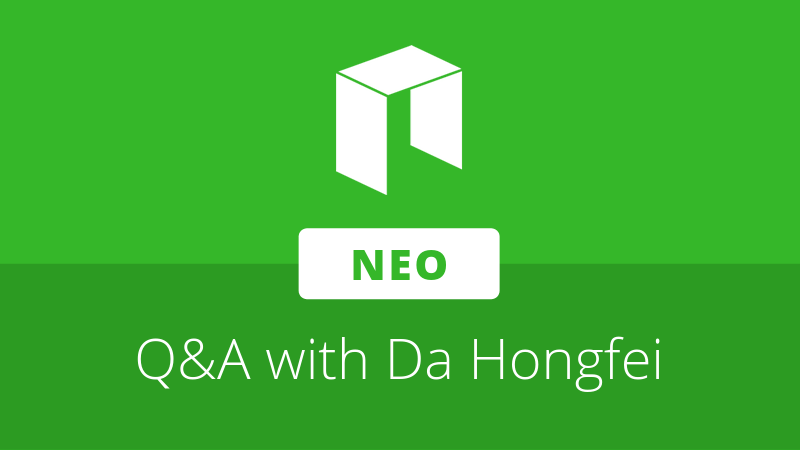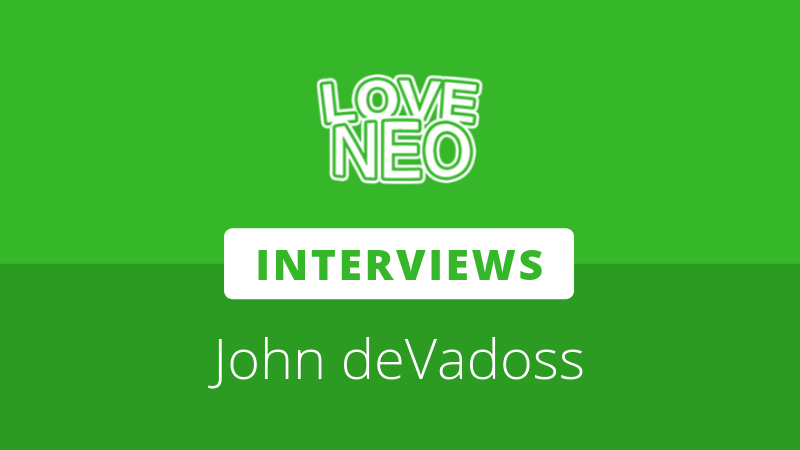
NEO co-founder Da Hongfei recently participated in two question and answer sessions; one as a combined AMA with Infinito Wallet, and the second in an interview with CryptoMonday. In the sessions, Da answered questions about the NEO blockchain, the plans for NEO3, and shared details on the upcoming cross-chain protocol in development by NEO and Ontology.
Infinito Wallet is a multi-asset cryptocurrencies wallet that supports NEO in addition to other popular chains such as EOS, ETH, and BTC. The team aims to ease blockchain adoption by simplifying the process of owning digital assets and accessing dApps.
However, as the wallet is not currently open-source, users will need to trust the wallet developers with the security of their assets. Due to this, the wallet is not currently endorsed by the NEO Foundation or NEO Global Development.
The combined AMA between NEO and Infinito was hosted by Infinito Director Jack Nguyen, who answered community questions alongside Da Hongfei. The AMA may be viewed here.
CryptoMonday is a German media outlet centered on blockchain technology, Bitcoin and other cryptocurrencies. The team interviewed Da Hongfei at the Web3 Summit 2019 in Berlin on August 19th, 2019. The full interview may be viewed here.
Below is a collection of comments made by Da Hongfei on various subjects.
NEO and GAS in NEO3
“NEO is the governance token, you can say its the stake of the network. You can use it to vote for consensus nodes, and in the future with NEO3, you can use it to vote for more things and do on-chain governance.”
“GAS token is the utility token. You use GAS to pay for transactions, to pay for deployment of smart contracts. According to our design, we hoped that GAS would become more stable than the stake token, but it turns out that everything in the crypto industry is very volatile. We are thinking about how to improve it, we don’t have a solution yet but we are working on it.”
On migrating tokens to NEO3
“Users will need to do something, because NEO3 is a different architecture, it is a more simplified or unified architecture. The user will probably need to move their tokens from the NEO2 to the NEO3 blockchain, luckily we already have an interoperability or cross-chain solution now.
So NEO2 and NEO3 will coexist for a while, so people can send their NEO2 tokens to the NEO3 blockchain. When most people have done that, we will wind down the NEO2 blockchain and NEO3 will become the main blockchain.”
NEO’s path to decentralization
“At NEO we believe that to move faster, to evolve faster, we need to have a certain level of centralization in the beginning. It is very similar to the political system that is adopted by East Asian countries. They are more centralized, they have stronger central governments than their counterparts in Europe or North America, because they are the latecomers. They need to catch up with other countries.
I think we are adopting a similar philosophy. At the early stage, NEO will be more centralized than other blockchains, but we have a very clear plan to decentralize everything.”
“We are in the process of decentralization, but we have paused a little bit because we are working on NEO3. It is a major upgrade, and at least it is a hard fork, so we need to move things really quick and make decisions more quickly, so we decided to pause the decentralization process until we finish NEO3. After NEO3, decentralization will be sped up.”
Building a cross-chain protocol
“Currently I am working with our engineers to adopt a cross-chain protocol to link NEO and Ontology together, so that data can be shared together, and assets can be shared from NEO to Ontology or Ontology back to NEO. Also, you can have atomic transactions on both platforms.
This cross-chain protocol will not just work for NEO and Ontology, actually it works for multiple blockchains. Imagine you have a blockchain for assets, a blockchain for digital identity, and maybe a blockchain for distributed storage like IPFS. Those blockchains [linked together] will be the foundation of the next-gen Internet.”
Comparing the cross-chain solution with Polkadot
“We are trying to solve two different problems. The problem Polkadot tried to solve is that if there is a developer, he wants to have a certain level of freedom with on-chain governance, but he can probably not develop a big enough community to secure the blockchain with miners, consensus nodes, or validators. These kinds of developers can join the Polkadot protocol, become a parachain and connect to the relay chain.
We are trying to solve the problem of multiple existing public blockchains; how can they talk to each other? So we are working on that solution. I would say it is complementary.”
Scaling NEO
“We are working very diligently on a new version of NEO, it’s called NEO3. It will be launch in another 6 months or maybe a year’s time. It will be a new version of NEO, and we are building a lot of things from scratch. I have very strong confidence in this new version.”
“The scalability of NEO itself is not bad compared to Bitcoin, Ethereum, or other public blockchains, but we don’t think in the future that every dApp will build directly on Layer 1, the NEO protocol. Most dApps will probably be built on Layer 2 solutions.
Personally, I believe that generalized state channels are probably the solution to achieve higher throughput and preserve privacy. Currently we are working with Celer, a state channel solution provider, to see how they can fit into the NEO ecosystem.”







About The Author: Brett Rhodes
Brett is a blockchain enthusiast and freelance writer who originally began producing content for the gaming & eSports industries. Now he spends most of his time contributing in the Neo ecosystem.
More posts by Brett Rhodes